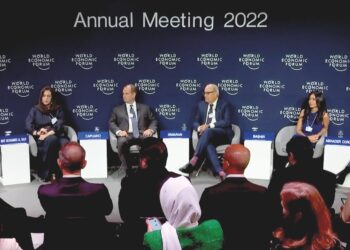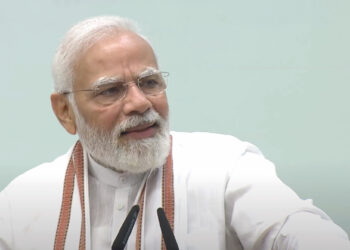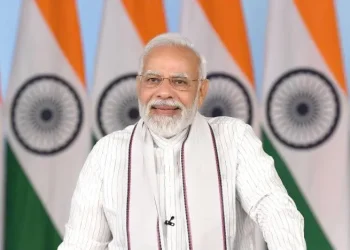Building Economies in Fragile Markets
Close to 2 billion people are likely to be impacted by the ongoing effects of the COVID-19 pandemic, threatening an already fragile social and economic system. With public spending alone unable to ensure the necessary capital, how can governments, humanitarian and development actors, and investors ensure meaningful action to accelerate investment in fragile markets?
Transcribed by Jennifer Paldano Goonewardane.
Speakers: Raj Kumar – President and Executive of Devex, Gelsomina Vigliotti – Vice President of the European Investment Bank, Mazen S. Darwazeh – Executive Vice Chairman, Hikma Pharmaceuticals and member of the Jordanian Senate, Peter Maurer – President, International Committee of the Red Cross and member of the board of trustees at the WEF, Clare Akamanzi – CEO, Rwanda Development Board.
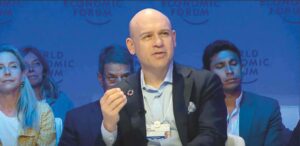
Raj Kumar (Moderator) – Welcome everyone. I’m Raj Kumar, President and Chief Executive of Devex. I’m delighted to be back again in person in Davos and with all those joining through the Livestream.
We are here to talk about one of the most important issues of the world today, which is about the most fragile economies in the world and what we can do to increase investments there. Humanitarian and Resilience Investing Initiative is headed by the World Economic Forum with partners since 2019 to address this directly. We will talk about its progress today and what are some of the opportunities and barriers.
We are joined by Clare Akamanzi, the CEO of the Rwanda Development Board, Peter Maurer, President of the International Committee of the Red Cross, and a member of the board of trustees at the World Economic Forum, Gelsomina Vigliotti who is the Vice President of the European Investment Bank and Mazen S. Darwazeh, who is an Executive Vice Chairman of Hikma Pharmaceuticals and a member of the Jordanian Senate.
I have a story from a prior World Economic Forum I attended. I was talking to a top executive of a major global corporation when a top executive of a global NGO walked up to us. The NGO executive said that their charitable fundraiser was coming up and that he would like to have his company write a check and sponsor it. The corporation executive said to me that what a shame that they are looking for small money from us, a check we are happy to write, but we have so much expertise. We invest millions in markets around the world. Isn’t there more we could be doing? That’s the impetus for the conversation today. In the most fragile markets where more than one billion people live what more can we do? Not that philanthropy and charity are unimportant. They are critical. But what can we do beyond that? The World Economic Forum is an ideal venue to get into that debate.
Peter, you have been part of launching this initiative, but a lot of people have a hard time trying to grasp what humanitarian investment means. Is there a case for investment in some of the most fragile economies in the world especially in places like Syria from where you just returned? What do you see happening on the ground? How would you define humanitarian investment?
Peter Maurer – It took me some years to understand the concept of humanitarian investment and not look at it as polarities that have nothing to do with each other. I think it starts with recognition from humanitarian organizations that substituting basic social services over long periods of conflict is decapacitating societies and at the end of the day violates the principle of ‘do no harm’ that humanitarians are strongly committed to.
The Red Cross has been deliberately looking for exit strategies wherever they worked. Over the last couple of years, we have started to look deliberately for exit strategies wherever we were.
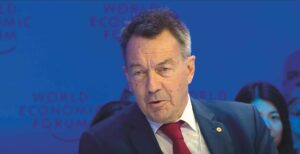
Humanitarian investment is an exit strategy against dependency. It looks at whether some of the social services delivered by humanitarian agencies could be substituted through economic modeling, which would bring them closer to the market and create sustainability and resilience in those societies. A good example is what we have done in several places including Syria and the DRC in sustainable water management. In Goma or Aleppo, water management involves water trucking. With water infrastructure destroyed you can do water trucking for ten years which is costly and unsustainable, and decapacitating, or else you could invest in the water distribution system, and try to fix the basics so that there is water available again in sufficient quantities to the households. If you do that you may look at different forms of financing. You may not bring that to the private sector because that would be too a risky jump to do immediately. But what you can do is create a step by step market rationale for water distribution systems in Goma and Aleppo, and other cities in which we are active and then overtime try to bring private investment, bring in big bank investment, global and regional development bank investment, humanitarian and philanthropic investment into a cluster of contributions in which each one has a role to play in creating a value chain of providing social services to the people, which is much more sustainable than continuing another ten years of water trucking in Aleppo and Goma.
Raj Kumar – Part of this initiative is humanitarian. But there is also resilience because we know crises are multiplying in number and growing in severity. If you do water trucking now with no sustainable approach you may need to increase the number of water trucking going forward. If it’s unsustainable today we may have to scale it. The problem that you brought up is not a civil engineering problem but financial engineering problem.
Peter Maurer – What we have done in the last two years in the seven biggest cities in Syria is planning on what would be needed in terms of pipes, tubes, pumps, and knowledge and how we would be able to finance.
In Goma we have been able to identify a volume of 40 million dollars; the World Bank contributed 15 million dollars, private philanthropists contributed to studies and we hope to find the 25 million dollars from the private sector to blend those different financial streams. It is actually whether you are able as different institutions with mandates, rules, procedures, and legislation that are binding you to find the soft spot in which you can bring those issues together and create something which you alone will not be able to create.
Raj Kumar – Clare you are famous for finding the soft spot in Rwanda. Finding the nexus where there is a development opportunity or there is philanthropic aid or also there is an opportunity to invest. Give us a sense of what some of those places you see opportunities in your context as you look to develop Rwanda’s economy?
Clare Akamanzi – Thank you, Raj. If you look back on Rwanda’s context the 1994 genocide against the Tutsis resulted in the loss of one million lives, and infrastructure was broken. It was fragile as fragile can be defined. Today 28 years later Rwanda is ranked as the second easiest place to do business in Africa and the 38th easiest place to do business in the world. If you look at the FDI investments that we were able to attract, both local and foreign investments, until 1995 there was nothing and in 2005 there were less than 100 million dollars in investment. 2010 it was around 398 million dollars and in 2021 3.7 billion dollars. I think that growth tells a story of how a country can make itself competitive over time to attract investments into the country.
We followed three or four ways that saw investments coming in. One was addressing the very issue of why the country was not stable. For us, it was divisionism and addressing what the people wanted, which was hope for the future and stability. Addressing that was very important and took us a lot of time to do. Fixing governance and fighting corruption. Today, Rwanda is ranked among the least corrupt countries. In many fragile contexts, you will find corruption thriving because there is no rule of law and order. For us fixing that was very important and bringing people along to that amid the division to fight it. To do that we had to tap into the strengths of the communities. There is something that we call homegrown solutions. As you think about socio-economic development, we had to look at some of the areas that the community has that can be built upon to create value. One example is the one cow one family project. Rwandans love keeping cows. Having a cow is an asset. How do you address key issues using that tradition by giving everyone a cow, then when an offspring is born the next family gets it? That addresses many things. One is milk for nutrition. We had a huge problem of stunting that we had to address. Also being able to use it as an economic asset. Milk to sell for money and also being able to live with your local community. The next example is how you bring old partners together to play their roles. For that, you have to organize. The problem with a fragile context is that everyone wants to come in and do their things such as NGOs with their agenda, and international organizations, the World Bank, and the IMF have theirs.
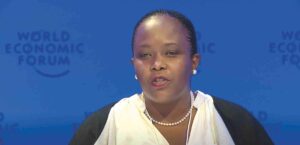
A country has to be very clear about what it wants and everybody else must be part of that. Rwanda did that very well. We defined what we wanted to do and where the priorities were. For example, for agriculture, we wanted fertilizer and land consolidation, and seeds for our farmers. If you want to help this is what you help in. I remember there was one organization that wanted to give food, we said that we don’t need food. Instead, we said we want our farmers to be empowered and to be able to grow their food. This international organization couldn’t distribute food and they had to take back the food out of the country. That was a lesson. If you want to work with us let’s organize ourselves. If you don’t organize yourself the killings will continue and even investments can’t thrive over time.
The other one is how you use public investment. We invested very much in public infrastructure. The first telecom company that came to the country was public investment. The first hotel that was built in Rwanda was public investment. Everybody criticized the decision. Today, there is Marriot, Radisson, Park, and Serena in the country. It was very important to use public investment to demonstrate how to de-risk that sector so that others can come in.
A country has to be very clear about what it wants and everybody else must be part of that. Rwanda did that very well.
Raj Kumar – De-risking is a keyword in this debate.
Clare Akamanzi – We also brought in philanthropic organizations. Today, the Howard Buffet Foundation is in Rwanda. When they asked us what we needed we asked for a school of conservation agriculture in which they invested. I think clarifying and defining what you want and being able to bring investors is helpful. Lastly, building a conducive business environment will help the private sector to come in. The private sector will come in but the government has to do a lot of de-risking. When we invested a lot in public investment, we were able to demonstrate. Today, we have 15 banks that are private and all the hotels are private. Yet before that, the government had to invest to make it attractive, removing regulations. It takes just six hours to register a business whereas ten years ago it would take a month. From a month to six hours, being able to get a property within two weeks, before which it used to take a year. Progressively removing regulations and obstacles to business and making Rwanda attractive for business ends up attracting investments as well.
Raj Kumar – We are hearing an interesting case on what governments need to do. In many fragile situations, there isn’t a government in a position to do what Rwanda’s government has done with examples. Maybe, Mazen, you can talk about what a private company can do. You are the President of the company in MENA. You’re looking at a region where there’s massive migration and a lot of instability. How do you operate across these challenging contexts in countries like Libya, and Syria? How do you operate in these places knowing that the context may not be as clear as what Clare laid out in hers, yet you are looking at business opportunities to serve millions of people who need access to medicine?
Mazen S. Darwazeh – We have to go back to the basics. When you are in pharma you are in medication, which means providing better healthcare for everyone in times of crisis and in good times. When we started 45 years ago, the principle of the company was to always have affordable medicines for communities around the world. Fortunately, or unfortunately, the Arab world is dismantled by several situations.
Through the Arab Spring and the civil wars, we were always trying to do as much as we could in the local communities by employing people, building infrastructure, and building manufacturing facilities to satisfy the needs of the local population and providing them with the medications they need. When we became a public quoted company, the balancing aspect came in. Being a public listed company, you have to balance your stakeholders and keep the sustainability of the long-term humanitarian aspect of your business because in pharma unlike in other industries you cannot tell a patient on dialysis or after a kidney transplant that we cannot give the medicines because the Syrian government is not functioning and hence, we can’t ship. If we don’t ship the necessary medication the patients will die. So, you have to balance things. Maintain the sustainability of your patients and stakeholders because at the end of the day it doesn’t become a financial decision, it becomes a decision where you balance being a public quoted company and a sustainable, ethical company in providing better healthcare and affordable medicines.
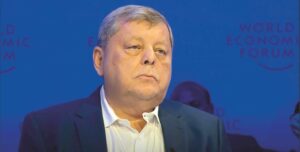
All of these countries that we’ve been talking about have always had their ups and downs. A good example is Egypt. We were investing in Egypt when the Arab Spring began, during the Islamic movement and when new governments came to power. We were employing. Once we employ more people on the ground you develop the communities and develop their well-being and you continue. One of the prime ministers in the WEF said Egypt was not a friendly place to invest under a particular prime minister. I said for us it is long term. We don’t look at governments. We don’t look at politics. We look at the human aspect of how to develop things. How do you tie that with the values of being a public quoted company? This is where despite the context you keep that process going on as a company that is leading in a region that is difficult. We have to keep on doing what we do best. For the other part, the spillover that you were talking about it’s becoming more difficult to sustain if the world is going to go into recession and if the world is going to go into more economic depravity where the banks are going to be more expensive to do business with. This is where the global institutions have to work with responsible companies keeping them alive in these markets by giving them a long-term process of how to invest. Because if we stop investment and become a pure business then there’s nothing more to do. This is where the partnership of sustainability has to be proactive and the responsibility of global institutions on how they work with countries and firms in the sustainable development of these countries.
Through the Arab Spring and the civil wars, we were always trying to do as much as we could in the local communities by employing people, building infrastructure, and building manufacturing facilities to satisfy the needs of the local population and providing them with the medications they need.
Raj Kumar – Gelsomina I think Mazen is talking about you. We are in this incredible moment of crisis. An unprecedented moment. A confluence of crises. People are looking to do what they can from their institutional ends and many are looking at major institutions like the European Investment Bank. I think you’ve just come back from Palestine. Perhaps you can tell us what you are doing at this moment. What are some of the examples? Many of the cases we all know in this room and that we all heard in this room today deal with water and sanitation investments, food and agriculture, and healthcare. I think a lot of major international institutions like yours in the financial system are lending through banks and platforms. Tell us something about how that works, in Palestine and beyond.
Gelsomina Vigliotti – Thank you very much and thank you very much for letting us participate in this discussion. The European Investment Bank may not be very well known within the development world but we have been operating in fragile countries for 60 years. We are present in most countries denominated as fragile according to the OECD. What is our role in those countries? I would like to take some of the points that were raised before. We are big financiers of large infrastructures and also small and medium enterprises and very small businesses. Why are these important? We understand that for an economy to work it needs infrastructure. We talked about water. There are many parts of the world where there is a need for water management, which is key to developing any type of business. If you do not have a good infrastructure, it is difficult to have businesses flourishing and incentivize the private sector. In that regard, we have very long experience in large infrastructure projects in many fragile situations.
We also foster private sector business. How do we do it? We do it through the local banking system. We are a large institution. We are increasing our presence in the field. This year we started a dedicated branch for global activities outside the European Union. I would like to remind you that we are a European Union Bank. Our shareholders are the European Union governments and we pursue the policy objective. Annually, we have investments outside the European Union in the order of eight to ten billion euros, which is a lot of resources. Our idea now is to improve our strategy in enhancing the development impact and to address how we enter different development situations in a better way. If you are in a fragile situation or if you are in an emerging economy the approach is going to be different. As I said we very often work through the local banking system to address the smaller business community. We have a limited presence on the field. We rely on the local banking system to reach smaller business opportunities.
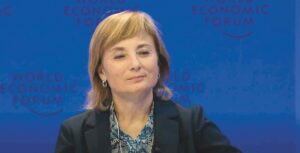
If you do not have a good infrastructure, it is difficult to have businesses flourishing and incentivize the private sector. In that regard, we have very long experience in large infrastructure projects in many fragile situations.
I mentioned to you before that I was in Palestine. I can see that the CEO of the Bank of Palestine is also in this room. We developed two initiatives in Palestine. One was during COVID with 300 million euros to support the economy (and in other parts of the world to address the COVID-19 crisis). The 200 million euros is a package dedicated to the development of small and medium enterprises.
Mazen referred to the difficult situation of high-interest rates in this economic situation. What we can do is de-risk our financing and blend our resources. For example, the grant by the European Commission. Part of the financial package dedicated to Palestine was for Gaza. The situation in Gaza is very difficult and we understand that to promote business we need to lower the level of collateral that is required by the banks. Through our blending of grant resources and lending resources, it will be possible to reduce the risk of the level of the project and to provide incentives for the ones who do not have collateral to start an activity. This is not sufficient financing support. What is important is first of all we are policy aligned with the policy priorities of the economies in which we work. We have a close strategic partnership with all the stakeholders present in an economy; the humanitarian institutions, the private sector, and other financial institutions. We have to share the same goals to achieve the project.
Let me finish with one issue, which is particularly relevant to us which is the climate. We like to call ourselves the climate bank. There’s a great relationship between fragility and the climate. Climate is one of the sources of fragility in many situations. So, we have to work to mitigate climate change’s impact. We understand it will be possible also to contribute to lowering the level of conflict as you know access to resources is one of the sources of conflict. So, if we can mitigate the climate impact, we can also lower the level of conflict. But at the same time, we are also confident that if we live in an environment where the level of conflict and fragility can be lowered the fight against climate change would be easier.
During the last four decades, we have invested in starting entrepreneurs and suppliers to have the supply chain complete in the markets we are dealing with. We have invested a lot in that.
Raj Kumar – These things are so inter-related and in fact, there’s a new strategy report out by the World Economic Forum, in partnership with the IKEA Foundation looking at the Humanitarian Resilience Investment Initiative for the next two years 2022 – 2024 and it lays out a lot of the things you have already picked up here about the challenges and the disconnect. Maybe we could zone in on that Peter. If you were in this moment, it’s a kind of break-the-glass moment. Major crises around the world and we have interesting ideas and initiatives. We can come up with these good examples that we just heard. But things are not going to scale. There are 100 million people displaced around the world. If it was a country, it would be like the fifteenth largest country in the world and you might think that it’s a big economy that you might invest in. But what this strategy report shows is that it’s not that easy to go invest in these markets. There are huge gaps. There’s fragmentation. There are good ideas but there isn’t enough de-risking capital. There are good ideas and entrepreneurs but there aren’t enough systems and government regulations. You have worked in this for years. Do you think we are at a different moment now? Is there a different opportunity now or is it just the crisis is bigger and the gaps are just what they were before?
Peter Maurer – I think there has been some progress from what has been said by Clare and Gelsomina. The progress part is that the proof of concept has been made in many places that investments, or blended finance, and aligning different sorts of finance, and if the governance structures are in place or substitutes in terms of consensus building of communities are in place then the proof of concept has been made that something else than just substitution in crises situations is possible. What is difficult is when we work bottom-up and top-down we see a lot of roadblocks. When we work top-down a lot of development institutions and multilateral and bilateral development agencies have a lot of problems accepting these new types of market-oriented projects to finance as it never fits the box that has been decided in those institutions as being the right one and even though in the last couple of years every development institution has created a fragility strategy; these fragility strategies take a lot of pain to trickle down through the institutions and get the roadblocks removed so that real finances arrive at the bottom.
Our role should be to work more deeply in these countries to help. There should be some self-reflection from the development and humanitarian community. Let’s face it.
Raj Kumar – We are using the word de-risking. What that means is that the risk has to grow on one side of the ledger, which is for the development organization.
Peter Maurer – A development bank as I have heard many times over the last couple of years is still a bank and doesn’t like risks. The question is what are the risk-sharing and risk transfer elements that we are integrating? What are the bureaucratic obstacles? What are the political obstacles? When you want to do financing in Syria and Afghanistan these days you encounter political obstacles. In certain contexts, you encounter legislation and sanctions that you have to overcome. Not every place is a Rwanda where you have a free road to do what you decide to do. So, there are roadblocks that we have to look at to see how we can overcome them to grow to scale. Very frankly from a bottom-up perspective that’s also difficult. To run the health system and water distribution and sanitation system in some of these places, you need skills and capacities and while they are normally developed quite well you still need to build modern systems. It needs education, training, and capacities to manage and some obstacles make it difficult. We have seen that in launching our Humanitarian Impact Bond of creating three physical rehabilitation centers in fragile contexts in Africa. We got private sector capital, we got humanitarian capital, we blended it, and we have some return-on-investment schemes. Finding in three hyper-fragile countries in conflict the necessary skills and capacities to run physical rehabilitation centers need to be addressed. It doesn’t happen from one day to another. Bureaucratic, political, legislative, and regulatory obstacles from top to bottom and the skills and capacity issues are important.
The last one is the governance issue. Sometimes we don’t have governments to talk to, to take decisions for potential foreign investors to tell them where to go. It is delicate to find to negotiate community consensus over certain areas where investment is possible. We tend to think in two broad baskets, which need different approaches. One basket is infrastructural you were alluding to. We made progress on the infrastructural side and I am quite hopeful that with the proof of concept we can move to speed and scale. What I find still quite difficult to get my head around is the sort of promotion of small businesses so that they can evolve to microcredit graduation. There is something you can do before you introduce finance into society and we see it very much in refugee camps where businesses are created but from there to going to the market, to be able to get credit, to service the credit is a big leap that we have underestimated and what it needs as an investment and frontloading of philanthropic money, of money that can’t generate a return.
Raj Kumar – When you see the strategy for the Humanitarian and Resilience Investment Initiative a lot of it is in an early stage because development organizations are so used to doing a project. But this is a very different conception. You’re thinking about a business, so you need the project originator or the entrepreneur and you need the financial conditions to get going. So much of the roadmap that has been laid out by this initiative is in its early stages. We could go around to the audience for questions.
Mazen, you are representing the private sector on this panel. You’re investing presumably in suppliers, in various small and medium enterprises. What are your challenges? Do you find that there are already partners that you can go and invest in and work with or do you find that you have to build up businesses and invest in entrepreneurs in these markets? What are the real-life conditions that you see every day?
Mazen S. Darwazeh – During the last four decades, we have invested in starting entrepreneurs and suppliers to have the supply chain complete in the markets we are dealing with. We have invested a lot in that. This brings me to something about the sustainability of these fragile markets to start with. The world stopped for three years because of COVID. Now we are in the new pandemic, which is called the new form of life. I worry that even today a very big chunk of the population worldwide has not been vaccinated and these markets become more fragile once you have the pandemic slowing down. Where is the responsibility of the world today in addressing the vaccination process? Only those who could afford have been vaccinated and those who could not afford don’t have it. We are talking about Syria where vaccine penetration is only about three or four percent, even in Libya, Sudan, Africa, and South America. If you want all of these economies to be sustainable and productive and resilient through the other institutions, we have to give them the basics. The world agreed that we will give them the basics but we failed them. If we look today at the worldwide population, I’m really worried about the sustainability of these economies going forward if they go into having outbreaks. I think it is important that the world is responsible for addressing these issues going forward.
Raj Kumar – I appreciate for bringing that into the agenda because we think about what the fragility context is and COVID is certainly a big and relevant piece of that. Let’s go to the audience here. I know there’s a lot of expertise here. Maybe we can take two or three questions in a rapid-fire format.
Question from the audience – I have been involved in the initiative from the start. We have been discussing this for a while at the forum. The issues that we often discuss at these forums are always like why we aren’t scaling and what is preventing us from making the quantum leap we need to make and as I was listening to this discussion, I was thinking about whether some of the problems are related to a trust deficit we have among the stakeholders to invest in a particular context and whether we can use the platform we have to create trust in a particular context. There are also assumptions about a particular country where it is justified as fragile, which is not a very good label if you want people to engage. You want them to engage somewhere where it is optimistic to go in and invest and there is some of the taxonomy we need to change, but it’s also guiding the business understanding in a lot of these places which are very differentiated markets according to the part of the country you work. Our role should be to work more deeply in these countries to help. There should be some self-reflection from the development and humanitarian community. Let’s face it. We’re still pushing, with some exceptions, the same model. We do want to collaborate, but ultimately, we want money for the system as it is from the private sector rather than changing the motives of collaboration. Finally, with the governments, the grant money ultimately doesn’t come back. Even if there is risk associated with blending, we need to blend a lot more as at least it’s an opportunity to try and leverage that investment differently.
Question from the audience – Back in 2018 I attended the summit of the Red Cross and the Red Crescent in Lomi, Togo. I was the only young entrepreneur in that room. I would like to know what’s the place for young Africans as we are about to be a billion. I have heard the discussion. But I didn’t get the focus on the young African.
Question from the audience – I represent the Baker Mackenzie law firm where we work in Europe, the Middle East, and Africa. I have a general question that is affecting Africa and maybe the fragile economies and it’s related to the present situation of the war in Ukraine. The perception is that the pandemic has been tougher on fragile economies and now with the war, it is difficult to see a positive outcome. My question is how the Ukraine war could affect the position of the economies of Africa and the fragile economies, the threat, and the potential opportunities?
Raj Kumar – We can use the responses for these comments as the wrap-up from our panelists. I’ll ask you to pick up on any of the threads. Sarah gave us many – including the trust deficit, and the way we think about these markets as fragile making investors think that this is not the place I want to be. What are some of these gaps that we face? Do we need more of a one-stop-shop or coalition to facilitate these investments?
Gelsomina Vigliotti – To me, governance is extremely important. In Gaza, they have electricity only for 12 hours a day. So, how can you develop the food or Agri industry there? There is a need to resolve that issue. How can you scale up if you do not have a regulatory system supporting how you trade? From my experience, I think business opportunities can be created on a small scale but to become larger you need infrastructure and governance and you need to create a context where the private sector is also attracted because otherwise, it will be very difficult to fail.
In the role of the multilateral development institutions resources are scarce and the Ukraine crisis is creating a very difficult environment. The need in Ukraine will be huge. At the same time in the rest of the world, there will be a need for resources as there will be food security issues, inflation, and climate issues. We have to look at how to optimize resources. We can de-risk it.
All the multilateral development banks can have a concessionary arm to get resources for the fragile situations. There is a strong push from governments to continue to provide resources to institutions that can continue doing important work in these economies.
Trust will come from success. Trust will be a result of good economic performance.
Raj Kumar – It’s a big story we will continue to look at how multilateral investments could do more. Clare, how do you bring young entrepreneurs into this discussion more as you think of developing your country’s economy?
Clare Akamanzi – The youth of Africa is a force that you cannot ignore. Anybody thinking of planning for the future, the youth of Africa have to be part of that. So, you have to have a balance.
Today, in Rwanda we talk about how to make agriculture more productive, but that’s old school. That’s the population that has been on subsidies. When you focus on young people the majority of who are less than 30 how do you find a future for them? It has been several ways. One is to support them to grow their businesses. We have the Business Development Fund that guarantees up to 75 percent of a loan. The risk to the bank is 25 percent. It has helped very small micro-entrepreneurs to access funding. The other one is innovation. We all know that African youth are very innovative. The problem is how they take their innovations to the market. There is a gap between the link of the idea they have and the financing to make it scalable to prove it’s sellable.
We have built the Rwanda Innovation City as well as the Rwanda Innovation Fund, which attracts entrepreneurs not only from Rwanda but the whole of Africa. If you set up in Rwanda you can access funding, half of it is from the African Development Bank. We hope that’s going to be an opportunity for Africans to come up with solutions that they can take to the market.
The last point is on skills. That’s a challenge. Sometimes you want to build skills as a country but it may take you a long time to build the skills that you want. We are talking about innovation but we don’t have the skills for innovation. We went to Carnegie Mellon University in the US. The best university you can think of. We told them to come to Rwanda and set up a university. I think the first time we met them they thought that we were crazy. We told them to just bring their name and we will do the rest such as financing and the building. And they did.
Today, we have over 400 Africans who have graduated from the Carnegie Mellon University and after the Rwandan government spent around 60 million dollars to pull that concept the Mastercard Foundation came last year to Rwanda to invest 350 million dollars to guarantee Africans who come to Rwanda to study to give 30 percent of the total scholarship of the investment they need. It’s very important to think out of the box, to build a future for the young Africans.Raj Kumar – It’s interesting to think top-down bottom-up as Peter mentioned maybe top-down it’s the MDBs and I’m glad the word entrepreneur has joined the discussion as we need that from the bottom-up.
Mazen, what are your quick takeaways from this discussion?
Mazen S. Darwazeh – Answering the question on Ukraine and talking about Gaza having electricity only for 12 hours, remember that Gaza is under occupation, and with that, you want the private sector also to flourish and give them the opportunity. But there are other things the world needs to do from a political point of view to end things that are deterring business and entrepreneurship and how they are depriving the new generation. There is a new generation of Palestinian children in Gaza not being able to get the basics because of what’s going on. Let’s look at the world in the full context of what we need to do rather than taking silos and talking about them.
Peter Maurer – I also want to come back on the topic of young entrepreneurs. I think it is one of those scaling and speeding issues that we have recognized. We do have great projects in identifying talents in humanitarian action and cooperation with the Tony Elumelu Foundation in identifying young entrepreneurs and bringing them fast out of dependency. The question is in a forum like this how many Tony Elumelu do you get to move young entrepreneurs in Africa to scale.
I am convinced once again that we will not get out of these discussions being abstract if we don’t move the needle to more de-risking and at the end of the day more de-risking is a political decision that you make risk capital available for functions we have recognized. Trust will come from success. Trust will be a result of good economic performance.
As I have led an organization for ten years and the logic to shift from fundraising for spending to investing to impact is a big cultural shift. And you can’t just make it happen easily in one organization. You have to have at least two cultures. If you don’t get those two cultures protected and striving within your organization you will find them competing rather than producing.
Raj Kumar – You’re talking about shifting the business model of a 200-billion-dollar industry, the global development industry and that’s not easy. We are all going to remember this Davos partly because of the weather and the unusual circumstances of this gathering. But I think we will also remember this rare moment that we have just before the major food crisis hits, as we look at tremendous fragility and geopolitical challenges layering on top and ask ourselves what we in this group could be doing.
We’re honored to co-host this session of the Devex for the World Economic Forum and try to pursue more answers to some of the key questions that were brought up today. I thank our panelists and all of you for joining us. Appreciate your time.


